Published on October 12, 2017
Or… How I Found My Life’s Mission
By Cedric Garland, Dr. P.H., F.A.C.E.
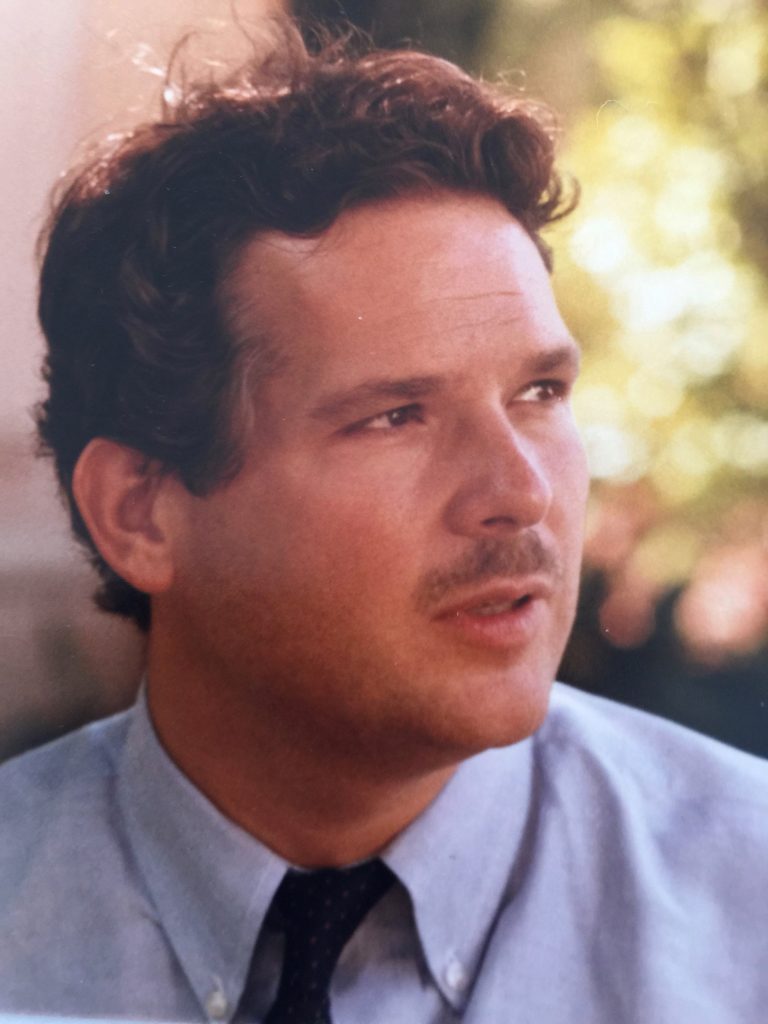
Cedric Garland, circa 1974
In the summer of 1974, my brother Frank and I found ourselves in a steaming hot lecture room at Johns Hopkins School of Hygiene and Public Health in Baltimore, Maryland. I had come from Los Angeles to Baltimore to take a job as an assistant professor at Hopkins and my brother was just starting out as a graduate student there. We were two young and eager epidemiologists… The heat was stifling and we looked at each other, “Remind me why we moved here?“ Frank muttered. A warm wind was pulsating in from outside through Venetian blinds making a noisy cadence in the open windows.
A man showed up. His name was Robert N. Hoover of the National Cancer Institute Environmental Epidemiology office. He had on a thick coat and trousers and was carrying a bulky briefcase complete with slide projector and decks of slides. Yes, this was long before the days of PowerPoint. Dr. Hoover proceeded to take his off his coat, sit down and insert his large rack of slides. I surmised from his expression that he did not seem to like the heat and visible dust suspended in the ancient room’s air.
It was the next hour that captivated both Frank and me, although I must admit it was not from Dr. Hoover’s dry wit, nor his nonchalant manner. It was the data. The conclusions we drew in an instant from the maps he projected were to be life-changing for us.
Let me step back a minute and remind you what was going on around 1974. Richard Nixon was President and on December 23, 1971, he had declared “The War on Cancer” and signed the National Cancer Act into law. This added funding to cancer research.
Well, to fight a war, the administration reasoned, you had to have a map. Ask any general. Maps are the sine qua non of combat planning. They are the essential documents that generals and admirals study. Without maps for direction and coherence, troops would fight only skirmishes. Ships would engage in random battles. What exactly were we fighting? Where was cancer concentrated? To attack these questions, Nixon and his people ordered the National Cancer Institute to create maps of cancer mortality rates across the US.
And that is where Dr. Hoover stepped back into the picture. He was among the people located in Bethesda, Maryland, a suburb of Washington, D.C., whose job was to create these maps. The Johns Hopkins University School of Public Health was the closest school of public health to Bethesda, so he was going to try his data out on a few Johns Hopkins University guinea pigs.
He started showing the slides. They had data from 3,056 counties in the US, from 1959 – 1969. A bright red color meant a high cancer death rate, dark blue meant low cancer death rate. The rates were adjusted for age and specific for sex. They were also race-specific… They looked like great mosaics of tiny pieces of colored glass.
People in the audience seemed to tire of the slides rather quickly, but not Frank and I. We were amazed at the geographic pattern. Almost all the maps were redder in the northern regions and bluer in the southern regions. The data was strikingly clear to us.
Then he showed the map of breast cancer…

On the breast cancer map, there was nearly twice as much breast cancer in the northern areas of the country than in the southern areas. This map really hit home to Frank and me because we had just driven across country, partly on Route 66, through regions of hot, intense sun in Arizona, New Mexico, and Texas. We understood that in those regions even few minutes of sun exposure could get you a lot of vitamin D. And then we arrived in the east – where we experienced firsthand the crowding, air pollution, and lack of sunlight. We instantly recognized that the lack of sunlight was THE factor in variations in death rates of many cancers. We also knew that sunlight provided vitamin D and that its deficiency was the cause of the pattern. The sun and its impact had long intrigued us. Now, this idle interest was becoming useful.
The moment hit me hard. It was evident that vitamin D was a big factor for breast cancer. Frank had exactly the same reaction at the same moment and was only a foot away. How could people see these maps and not notice or care about this pattern? Were we the only ones in the room that cared about this information? I would now guess that we were locked and loaded to see an effect of geographic variation in sunlight and vitamin D. Other scientists in the room later advised us to drop this fanciful line of inquiry immediately.
In any event, beginning at that moment, Frank and I made it our mission to seek associations between vitamin D and cancers. We decided to start with colon cancer because research in breast cancer was over-populated – and colon cancer was a more open field. We published our first paper in 1980 in the International Journal of Epidemiology. I thought the world would be changed by our revelation. So did Frank, but nothing happened. No one believed it. Crickets.
Everyone thought that inadequate fiber was the cause of colon cancer. Two hundred or so years before, Rev. Sylvester Graham and a health enthusiast named Kellogg invented the graham cracker and boxed cereals – and marketed up a storm. That notion took off. But the rate of cancer did not drop, not even a tiny amount.
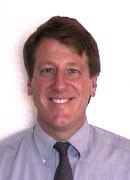
Edward Gorham, Circa 2008
Despite being advised by our colleagues to “Stop it!” we continued vitamin D oriented research and publications. Each time they were published no action was taken. One criticism was that as well as a North/South gradient in colon and breast cancer mortality, there also was an East/West gradient with higher rates of breast and colon cancer in the East compared to the West. After Frank and I moved back to California, we began to consider this gradient with a graduate student named Edward Gorham. With Ed’s help, we looked at acid haze air pollution patterns and found a relationship with colon and breast cancer mortality. Sulfur dioxide and sulfate crystals in the air reduce transmission of ultraviolet light and diminish its vitamin D producing rays. This pollution is much more common in the East. The three of us published a study describing this correlation. We also conducted a dietary study which found that indoor workers who had higher dietary intake of vitamin D had reduced colon cancer risk. We examined vitamin D levels in serum as well and found that those with higher serum levels of vitamin D had reduced incidence of colon cancer after years of follow-up. Still, the larger medical community was relatively unmoved. We heard nothing.
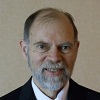
William Grant, Circa 2008
We were happy at least to see that another bold scientist joined us when William B. Grant, Ph.D., who was a Caltech grad from NASA, joined in publishing research on vitamin D versus cancer, including many research papers co-authored with one or more of us. Grant was to publish many valuable papers on this topic. These papers brought new life to vitamin D and cancer research. He developed a major following in Europe, which extended scientific research activity on vitamin D. This was accomplished with great effort and tenacity. We all owe a debt to Grant for his fine studies that have applied stratification and regression to studies making international comparisons. In the mid-nineties, a team of distinguished researchers led by Professor Edward Giovannucci of the Harvard School of Public Health published the first of many papers from Harvard based on large cohort studies describing how low serum 25-hydroxyvitamin D or proxy measures of it are associated with elevated incidence of cancer. These papers closed the case that vitamin D prevents cancers of the colon, among other cancer sites, and that it reduces fatality of prostate cancer. This group was soon joined by Drs. Charles Fuchs and Kimmie Ng of Harvard’s Dana Farber Cancer Center, further confirming that vitamin D definitely prevents many cancers and increases survival in breast and colon cancer patients.
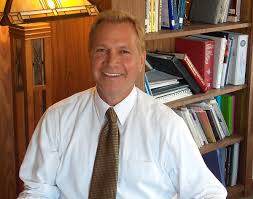
Frank Garland, circa 2000, in his UCSD office
These scientists contributed greatly to the understanding and acceptance of vitamin D against cancer by the scientific and advanced academic medical communities. While avant-garde scientists and academic physicians were becoming convinced that vitamin D can prevent or reduce incidence and fatality of many cancers, few members of the general population were embracing vitamin D for cancer prevention or as part of cancer treatment. Progress was dead slow in the general population despite great scientific progress proving the vitamin D cancer theory since 1980, when it was first proposed that vitamin D prevents cancer, to our knowledge. Two earlier studies suggested that sunlight or skin cancer was inversely related to cancer overall but did not link this to vitamin D.
And then, amid all of this scientific progress, the three of us met Carole Baggerly. This moment is ingrained in my consciousness. We attended a Conference at the National Institute of Health. All the same players were there, per usual.
The big critics of vitamin D were well represented, filling most of the chairs but we also had a few vitamin D scientists in the audience. There was one woman, however, sitting in the second row from the front who was new. We watched her with interest but did not recognize her. She was very quiet throughout the 2-day conference, but I could tell she was listening to every word and taking detailed notes. She waited and listened. Then, when the meeting was less than 10 minutes from ending, she raised her hand and pushed a microphone button to speak. A red light lit up brightly at her position. Then there was silence. Then I heard what I would now call, the “Gettysburg Address of vitamin D.”
“Where is your sense of urgency?” she cried aloud to the astonished scientists. The audience was struck dumb, all too stunned to speak in the face of these truths. The organizers called the event to a rapid close.
Ed and I walked to the front of the auditorium to meet this woman and shake her hand in thanks for her stunning words. That moment was the beginning of a relationship with Carole, which has given Ed, my late brother, Frank, and me great pleasure. Carole is a human tour de force, helping bring the message of vitamin D deficiency and cancer prevention to the public and she has done it with grace and professionalism.
We researchers are good at performing research. Carole is good at making things happen.
Carole characteristically says when confronted with challenges, “Onwards!”
Action Steps
If you are reading this, first take care of yourself and your families. Test your serum 25-hydroxyvitamin D and aim to reach 40 ng/ml (100 nmol/L). Tell your doctor what you are doing, and ask for their advice. Women may want to aim a little higher, maybe even 60 ng/ml (150 nmol/L). Next, if you can, donate to this great cause – because GrassrootsHealth will be the force to make a change in public health. And finally, tell others about this outstanding organization and about what vitamin D can do for humankind.
About Dr. Cedric Garland
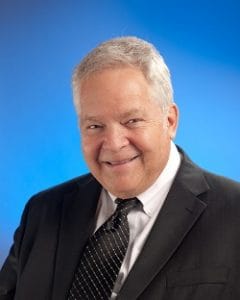 Cedric Garland, Dr. P.H., F.A.C.E.
Cedric Garland, Dr. P.H., F.A.C.E.
Emeritus Professor, Department of Family Medicine and Public Health
University of California, San Diego
Dr. Garland joined the Epidemiology Division in the Department of Family Medicine and Public Health at the University of California, San Diego in 1980 and is currently Professor Emeritus. Garland’s research program of 35 years has focused on discovering the causes of cancer and helping advance understanding of the causes and prevention of type 1 and type 2 diabetes. Garland and his colleagues were among the first scientists to discover that passive smoking causes fatal ischemic heart disease (heart attacks), a finding that led to banning smoking in restaurants in California. He has taught in the core epidemiology track for medical students as well as public health and preventive medicine electives. He also trains and serves as a mentor for doctoral students. His recent work with colleague Dr. Edward D. Gorham and others shows that a high concentration of a vitamin D metabolite, 25-hydroxyvitamin D, in the serum is associated with a substantially lower incidence of colorectal and postmenopausal breast cancers, as well as type 1 and type 2 diabetes. Garland is confident that improvements in vitamin D status, resulting from higher serum 25(OH)D concentrations than are normally encountered at present, will lead to the eradication of colorectal cancer and type 1 diabetes, and greatly reduce or eradicate incidence and mortality of 11 cancers including postmenopausal breast cancer, ovarian cancer, kidney cancer, bladder cancer, multiple myeloma, and leukemia.
 References
References
Do Sunlight and Vitamin D Reduce the Likelihood of Colon Cancer?
Cedric F. Garland, Frank C. Garland
International Journal of Epidemiology
September 1980
(This paper was reprinted by the journal in recognition of the 25th anniversary of its publication, with comments by epidemiologists)
Read Paper
Acid Haze Air Pollution and Breast and Colon Cancer Mortality in 20 Canadian Cities
Ed Gorham, Cedric Garland, Frank Garland
Canadian Journal of Public Health
March 1989
Read Paper
Serum 25-Hydroxyvitamin D and Colon Cancer: Eight-year Prospective Study
Cedric Garland, Frank Garland, Ed Gorham et al.
The Lancet
November 1989
Read Paper
Geographic Variation in Breast Cancer Mortality in the United States: A Hypothesis Involving Exposure to Solar Radiation
Frank Garland, Cedric Garland, Ed Gorham et al.
Preventive Medicine
November 1990
Read Paper
Sunlight and Breast Cancer Incidence in the USSR
Ed Gorham, Cedric Garland, Frank Garland
International Journal of Epidemiology
December 1990
Read Paper
Can Colon Cancer Incidence and Death Rates be Reduced with Calcium and Vitamin D?
Cedric Garland, Frank Garland, Ed Gorham
American Journal of Clinical Nutrition
July 1991
Read Paper
Calcium and Vitamin D: Their Potential Roles in Colon and Breast Cancer Prevention
Cedric Garland, Frank Garland, Ed Gorham
Annals of the New York Academy of Sciences
October 1999
Read Paper
Vitamin D Supplement Doses and Serum 25-Hydroxyvitamin D in the Range Associated with Cancer Prevention
Cedric Garland, in association with GrassrootsHealth
Anticancer Research
January 2001
Read Paper
Vitamin D and Prevention of Colorectal Cancer
Ed Gorham, Cedric Garland, Frank Garland et al.
Journal of Steroid Biochemistry and Molecular Biology
October 2005
Read Paper
The Role of Vitamin D in Cancer Prevention
Cedric F. Garland et al.
American Journal of Public Health
February 2006
Read Paper
Role of Ultraviolet B Irradiance and Vitamin D in Prevention of Ovarian Cancer
Cedric Garland, Ed Gorham, Frank Garland et al.
American Journal of Preventive Medicine
December 2006
Read Paper
Optimal Vitamin D Status for Colorectal Cancer Prevention: A Quantitative Meta Analysis
Ed Gorham, Cedric Garland, Frank Garland et al.
American Journal of Preventive Medicine
March 2007
Read Paper
Vitamin D and Prevention of Breast Cancer: Pooled Analysis
Cedric Garland, Ed Gorham, Frank Garland et al.
Journal of Steroid Biochemistry and Molecular Biology
March 2007
Read Paper
Vitamin D for Cancer Prevention: Global Perspective
Cedric Garland et al.
Annals of Epidemiology
July 2009
Read Paper
Note: More publications may be found with a google search “ncbi vitamin D cancer Garland”

